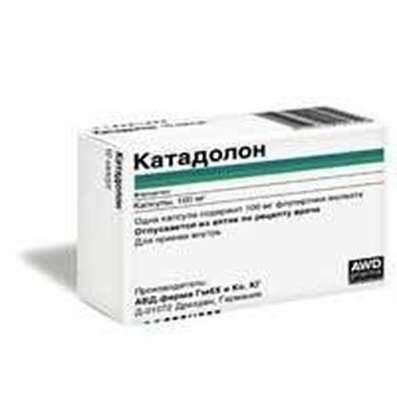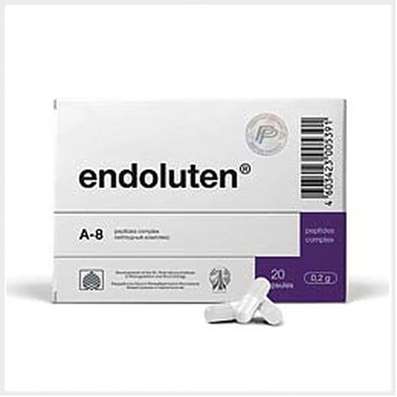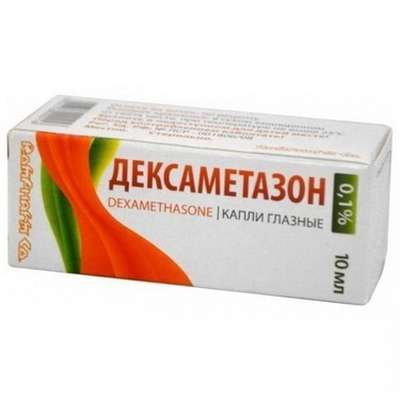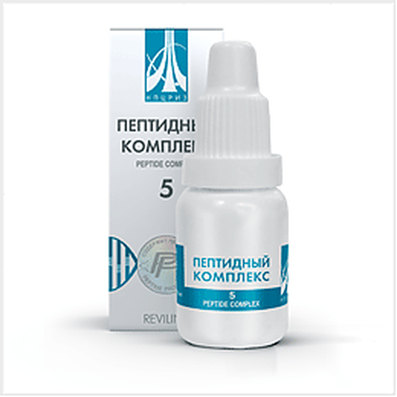Instruction for use: Xyzal
I want this, give me price
Dosage form: Drops for oral administration; Film-coated tablets
Active substance: Levocetirizinum*
ATX
R06AE09 Levocetirizine
Pharmacological groups:
Antiallergic agent - H1-histamine receptor blocker [H1-antihistamines]
The nosological classification (ICD-10)
H04.9 Illness of lacrimal apparatus, unspecified: Insufficient production of tear fluid; Insufficient lacrimation; Red eye syndrome; Lachrymation; Dryness of the anterior surface of the eye
H10.1 Acute atopic conjunctivitis: Allergic conjunctivitis; Allergic eye diseases; Allergic conjunctivitis; Allergic conjunctivitis caused by chemical and physical factors; Allergic rhinoconjunctivitis; Allergic inflammation of the eyes; Spring Qatar; Spring keratitis; Spring conjunctivitis; Conjunctivitis allergic; Year-round allergic conjunctivitis; Exacerbation of pollinosis in the form of rhinoconjunctival syndrome; Acute allergic keratoconjunctivitis; Acute allergic conjunctivitis; Superficial bacterial infection of the eyes; Rhinoconjunctivitis; Seasonal allergic conjunctivitis; Seasonal conjunctivitis; SENSORY; Chronic allergic keratoconjunctivitis; Chronic allergic conjunctivitis
H11.4 Other conjunctival vascular diseases and cysts: Edema of the conjunctiva; Secondary hyperemia of the eye; Hyperemia of the conjunctiva; Hyperemia of the membranes of the eye
J00 Acute nasopharyngitis [rhinitis]: Viral rhinitis;Inflammation of the nasopharynx; Inflammatory Nose Disease; Purulent rhinitis; Nasal congestion; Nasal congestion due to cold and flu; Difficulty with nasal breathing; Difficulty with nasal breathing for colds; Difficult nasal breathing; Difficult nasal breathing for colds; Nasal hypersecretion; Coryza; ARI with phenomena of rhinitis; Acute rhinitis; Acute rhinitis of various origins; Acute rhinitis with thick purulent-mucous exudate; Acute rhinopharyngitis; Edema of the mucous membrane of the nasopharynx; Rhinitis; Rhinorrhea; Infectious-inflammatory disease of ENT organs;Severe cold; Rhinopharyngitis
J30 Vasomotor and allergic rhinitis: Allergic rhinopathy; Allergic rhinosinusopathy; Allergic diseases of the upper respiratory tract; Allergic rhinitis; Allergic rhinitis seasonal; Vasomotor runny nose; Prolonged allergic rhinitis; All-year-round allergic rhinitis; All-year allergic rhinitis; Year-round or seasonal allergic rhinitis; All-the-year-round rhinitis of an allergic nature; Rhinitis vasomotor allergic; Exacerbation of pollinosis in the form of rhinoconjunctival syndrome; Acute allergic rhinitis; Edema of the nasal mucosa; Edema of the nasal mucosa; Edema of the mucous membrane of the nasal cavity; Swelling of the nasal mucosa; Swelling of the nasal mucosa; Pollinosis; Permanent allergic rhinitis; Rhinoconjunctivitis; Rhinosinusitis; Rhinosinusopathy; Seasonal allergic rhinitis; Seasonal allergic rhinitis; Hay rhinitis; Chronic allergic rhinitis; Allergic diseases of the respiratory tract
J30.1 Allergic rhinitis caused by pollen of plants: Hay fever; Hay fungus; hay fever; Hypersensitivity to pollen of plants; Polyposis allergic rhinosinusitis; Seasonal pollinosis; Seasonal rhinitis
J30.2 Other seasonal allergic rhinitis: Allergic rhinitis seasonal; Seasonal rhinitis of an allergic nature
J30.3 Other allergic rhinitis: Allergic rhinitis year-round; Allergic rhinoconjunctivitis
L20 Atopic dermatitis: Allergic diseases of the skin; Allergic skin disease noninfectious etiology; Allergic skin disease etiology nemikrobnoy; Allergic skin diseases; Allergic skin lesions; Allergic reactions on the skin; atopic dermatitis; Allergic dermatosis; Allergic diathesis; Allergic itching dermatosis; Allergic skin disease; Allergic skin irritation; allergic Dermatitis; atopic Dermatitis; allergic dermatoses; exudative diathesis; Itchy atopic eczema Itchy allergic dermatosis; Allergic skin disease; Cutaneous allergic reaction to drugs and chemicals; Cutaneous reactions to medications; Skin and allergic disease; Acute eczema; common neurodermatitis; Chronic atopic dermatitis; Exudative diathesis
L29 Itching: Itching with partial obstruction of the biliary tract; Dermatitis itchy; Dermatosis with persistent itching; Other itching dermatoses; Itching dermatoses; Itching allergic dermatosis; Itching dermatitis; Itching dermatosis; Itching itch; Excruciating itching; Severe itching; Endogenous itching; Skin itching with dermatosis; Restricted itchy dermatitis; Itching of the skin; Itchy scalp; Itching eczema
L29.8 Other itching: Itching of the eye; Itching of the conjunctiva; Itching of the palate; Itching of the nose; Itching of the nasal mucosa; Itchy syringe; Itchy pruritus
L50 Urticaria: Idiopathic chronic urticarial; Injury Urticaria; Chronic urticarial; Hives of the newborn
R06.7 Sneezing: Sneezing
R21 Rash and other nonspecific skin rashes: Skin rash; Skin and mucous eruptions; Skin rashes; Drug rash; Medicinal rash fixed; Dry skin rashes; Rash; Toxidermy; Toxicoderma; Toxic rash; Korepodobnye rashes from drugs; Macular Papular Eruptions; Drug-induced rash
Composition
Tablets covered with a film coating.
active substance: Levocetirizine dihydrochloride 5 mg
Auxiliary substances: MCC - 30 mg; Lactose monohydrate - 63.5 mg; Silicon dioxide colloidal - 0.5 mg; Magnesium stearate - 1 mg
Film membrane: Opadry Y-1-7000 (hypromellose (E464) - 62.5%, titanium dioxide (E171) - 31.25%, macrogol 400 - 6.25%) - 3 mg
Drops for oral administration 1 ml
active substance: Levocetirizine dihydrochloride 5 mg
Auxiliary substances: sodium acetate - 5.7 mg; Acetic acid 0.53 mg; Propylene glycol 350 mg; Glycerol 85% - 294.1 mg; Methylparahydroxybenzoate 0.3375 mg; Propyl parahydroxybenzoate 0.0375 mg; Sodium saccharinate - 10 mg; Purified water - up to 1 ml
Description of dosage form
Tablets: oval, covered with a film shell of white or almost white color. On one side of the tablet the "Y" marking is stamped out.
Drops: practically colorless slightly opalescent solution.
Pharmachologic effect
Mode action - anti-allergic, antihistamine.
Pharmacodynamics
Levocetirizine, the active substance of Xisal®, is the cetirizine R-enantiomer, which belongs to the group of competitive histamine antagonists and blocks H1-histamine receptors.
Levocetirizine influences the histamine-dependent stage of allergic reactions, and also reduces eosinophil migration, vascular permeability, and limits the release of inflammatory mediators.
Levocetirizine prevents development and facilitates the course of allergic reactions, has antiexudative, antipruritic and has almost no anticholinergic and antiserotonin effect. In therapeutic doses, it practically does not cause sedation.
Pharmacokinetics
Pharmacokinetic parameters of levocetirizine vary linearly and practically do not differ from the pharmacokinetics of cetirizine.
Suction. After ingestion, the preparation is quickly and completely absorbed from the digestive tract. The intake of food does not affect the completeness of absorption, although its rate decreases. In adults, after a single dose of the drug in a therapeutic dose (5 mg), Cmax in the blood plasma is 270 ng / ml and is achieved after 0.9 hours, after repeated administration at a dose of 5 mg - 308 ng / ml. Css is achieved in 2 days.
Distribution. Levocetirizine binds to blood plasma proteins by 90%. Vd is 0.4 l / kg. Bioavailability reaches 100%.
Metabolism. In small amounts (<14%) is metabolized in the body by N- and O-dealkylation (in contrast to other antagonists of H1-histamine receptors, which are metabolized in the liver by the cytochrome system) to form a pharmacologically inactive metabolite. Because of the slight metabolism and the lack of a metabolic potential, the interaction of levocetirizine with other drugs is unlikely.
Excretion. In adults, T1 / 2 is (7.9 ± 1.9) h; In young children, T1 / 2 is shortened. In adults, the total clearance is 0.63 ml / min / kg. About 85.4% of the accepted dose of the drug is excreted by the kidneys in unchanged form by glomerular filtration and tubular secretion; About 12.9% - through the intestines.
In patients with renal insufficiency (Cl creatinine <40 ml / min) the clearance of the drug decreases, and T1 / 2 is prolonged (for example, in patients undergoing hemodialysis, the total clearance is reduced by 80%), which requires a corresponding change in the dosing regimen. Less than 10% of levocetirizine is removed during a standard 4-hour hemodialysis procedure.
Indications of the Xyzal
Treatment of such symptoms year-round (persistent) and seasonal (intermittent) allergic rhinitis and allergic conjunctivitis, such as itching, sneezing, nasal congestion, rhinorrhea, lacrimation, conjunctival hyperemia;
Pollinosis (hay fever).
hives;
Other allergic dermatoses, accompanied by itching and rashes.
Contraindications
For all dosage forms
Hypersensitivity to levocetirizine or piperazine derivatives, as well as other components of the drug;
Terminal stage of renal failure (Cl creatinine <10 ml / min);
pregnancy;
The period of breastfeeding.
With caution: chronic renal failure (correction of dosing regimen is necessary); Elderly age (glomerular filtration may be decreased); Spinal cord injury, prostatic hyperplasia, and the presence of other predisposing factors to urinary retention, since levocetirizine may increase the risk of urinary retention; Simultaneous use with alcohol (see "Interaction").
For tablets coated with a film sheath, in addition:
Deficiency of lactase, lactose intolerance, glucose-galactose malabsorption;
Children under 6 years of age (due to limited safety and efficacy data).
For drops for oral administration additionally:
Children's age to 2 years (due to limited data on the effectiveness and safety of the drug).
Application in pregnancy and lactation
Preclinical studies did not reveal any direct or indirect adverse effects of levocetirizine on the developing fetus, as well as on development in the postnatal period; The course of pregnancy and childbirth also did not change.
Adequate and strictly controlled clinical trials on the safety of the drug during pregnancy have not been conducted.
The use of the drug in pregnancy is contraindicated.
Levocetirizine is excreted in breast milk, so if it is necessary to use the drug in lactation it is recommended to stop breastfeeding.
Side effects
During clinical trials in men and women 12-71 years, often (≥1 / 100, <1/10), the following adverse events were observed: headache, drowsiness, dry mouth, fatigue; Infrequently (≥1 / 1000, <1/100) there were asthenia and abdominal pain. Children from 6 to 12 years old often had headache and drowsiness. During the post-marketing use of the drug, the following side effects were observed, the frequency of which is unknown due to insufficient data.
From the immune system: hypersensitivity reactions, including anaphylaxis.
From the side of metabolism and eating disorders: increased appetite.
From the side of the psyche: anxiety, aggression, agitation, insomnia, hallucinations, depression, suicidal thoughts.
From the side of the nervous system: convulsions, thrombosis of the sinuses of the dura mater, paresthesia, dizziness, fainting, tremor, dysgeusia.
From the side of hearing: vertigo.
From the side of the organ of vision: visual impairment, indistinct visual perception, inflammatory manifestations.
From the CVS: palpitation, tachycardia, jugular vein thrombosis.
On the part of the respiratory system: dyspnea, increased symptoms of rhinitis.
From the digestive system: nausea, vomiting.
Hepatobiliary disorders: hepatitis.
From the kidneys and urinary system: dysuria, urine retention.
From the skin and soft tissues: angioedema, persistent drug erythema, rash, itching, urticaria, hypotrichosis, fissures, photosensitization.
From the musculoskeletal system: pain in the muscles.
General disorders: peripheral edema.
Other: weight gain, changes in functional liver samples, cross reactivity.
If any of the side effects indicated in the manual are aggravated or the patient has noticed other side effects, you should inform your doctor.
Interaction
The interaction of levocetirizine with other drugs has not been studied. In the study of the drug interaction of the racemate cetirizine with phenazone, pseudoephedrine, cimetidine, ketoconazole, erythromycin, azithromycin, glipizide and diazepam, no clinically relevant undesirable interactions have been identified.
With simultaneous appointment with theophylline (400 mg / day), the total clearance of cetirizine is reduced by 16% (theophylline kinetics does not change).
In the study, while taking ritonavir (600 mg twice daily) and cetirizine (10 mg / day), it was shown that the exposure of cetirizine increased by 40%, and the exposure of ritonavir slightly changed (-10%).
In a number of cases, with simultaneous use of levocetirizine with alcohol or drugs depressing the central nervous system, it is possible to increase their effect on the central nervous system, although it has not been proven that the racemate of cetirizine potentiates the effect of alcohol.
Dosing and Administration
Inside, during meals or on an empty stomach. Tablets, film-coated, swallow whole, washed down with a small amount of water. To take the drug in the form of drops, you should use a teaspoon. If necessary, the dose of the drug can be diluted in a small amount of water immediately before use.
Adults and children over 6 years of age: the daily dose is 5 mg (1 table or 20 drops) once.
Children from 2 to 6 years: 1.25 mg (5 drops) 2 times a day; Daily dose of 2.5 mg (10 drops).
Since levocetirizine is excreted from the body by the kidneys, when the drug is administered to patients with renal insufficiency and elderly patients, the dose should be adjusted depending on the amount of creatinine clearance. The creatinine clearance for men can be calculated based on the serum creatinine concentration, according to the following formula:
Cl creatinine, ml / min
The creatinine clearance for women can be calculated by multiplying the obtained value by a factor of 0.85.
Elderly patients with normal renal function are not required to dose reduction; In patients with chronic renal insufficiency, the calculation of the dose should be carried out taking into account the clearance of creatinine according to the table below.
| Renal insufficiency | Clcreatinine, ml/min | Dose and multiplicity of admission |
| Missing (norm) | ≥80 | 5 mg / day |
| Lightweight | 50–79 | 5 mg / day |
| Average | 30–49 | 5 mg once in 2 days |
| Heavy | <30 | 5 mg every 3 days |
| Terminal stage - patients on hemodialysis | <10 | The drug is contraindicated |
Patients with renal and hepatic insufficiency dosing is carried out according to the table given above.
Patients with a violation of only liver function correction of the dosing regimen is not required.
Duration of the drug: in the treatment of seasonal (intermittent) rhinitis (the presence of symptoms less than 4 days a week or their total duration of less than 4 weeks), the duration of treatment depends on the nature of the disease; Treatment can be stopped if symptoms disappear and are resumed when symptoms appear. In the treatment of year-round (persistent) allergic rhinitis (the presence of symptoms more than 4 days a week and their total duration of more than 4 weeks) treatment is possible during the entire exposure period of allergens. There is a clinical experience of the continuous use of Xyzal® tablets in adult patients with a duration of up to 6 months.
Overdose
Symptoms: drowsiness (in adults), agitation and anxiety, followed by drowsiness (in children).
Treatment: gastric lavage or the appointment of activated charcoal, if after taking the drug has passed little time. Symptomatic and maintenance therapy is recommended. There is no specific antidote. Hemodialysis is ineffective.
Special instructions
Methyl parahydroxybenzoate and propyl parahydroxybenzoate, which are part of the drops for oral administration, can cause allergic reactions (possibly delayed type).
Influence on the ability to drive vehicles and work with machinery. Levocetirizine can lead to increased drowsiness, hence Xyzal ® may affect the ability to drive or work with machinery. During the treatment period, it is necessary to refrain from engaging in potentially dangerous activities that require an increased concentration of attention and speed of psychomotor reactions.
Release form
Tablets, film-coated, 5 mg. In the blister of PVC / aluminum foil, 7 or 10 pcs. 1 or 2 blisters in a cardboard box.
Drops for oral administration, 5 mg / ml. In bottles of dark glass (type III, Ph. Eur.) With a nominal capacity of 15 ml, equipped with a dropper of LDPE, with a screw cap made of white polypropylene, with protection from children, 10 ml. In bottles of dark glass (type III, Ph. Eur.) With a nominal capacity of 20 ml, equipped with a dropper of LDPE, with a screw cap made of white polypropylene, with protection from children, 20 ml. 1 fl. In a cardboard box.
Manufacturer
The tablets covered with a film cover. FSB Farshim S.A. Industrial zone of Planshee, Schmene de Croix Blanche 10, CH-1630 Boulle, Switzerland.
Drops for oral administration. Eisika Pharmaceuticals Srl Via Pralaya 15, 10044 Pianezza (Turin), Italy.
The owner of the registration certificate: YUSB Farshim SA.
Conditions of leave from pharmacies
Film-coated tablets - without a prescription.
Drops for ingestion - according to the prescription.
Storage conditions of the drug Xyzal
In a dry place, at a temperature of no higher than 25 ° C.
Keep out of the reach of children.
Shelf life of the drug Xyzal
Film-coated tablets 5 mg - 4 years.
Drops for ingestion 5 mg / ml - 3 years. After opening the bottle - 3 months.
Drops for ingestion 5 mg / ml - 3 years. After opening the bottle - 3 months.
Do not use after the expiry date printed on the package.

 Cart
Cart





